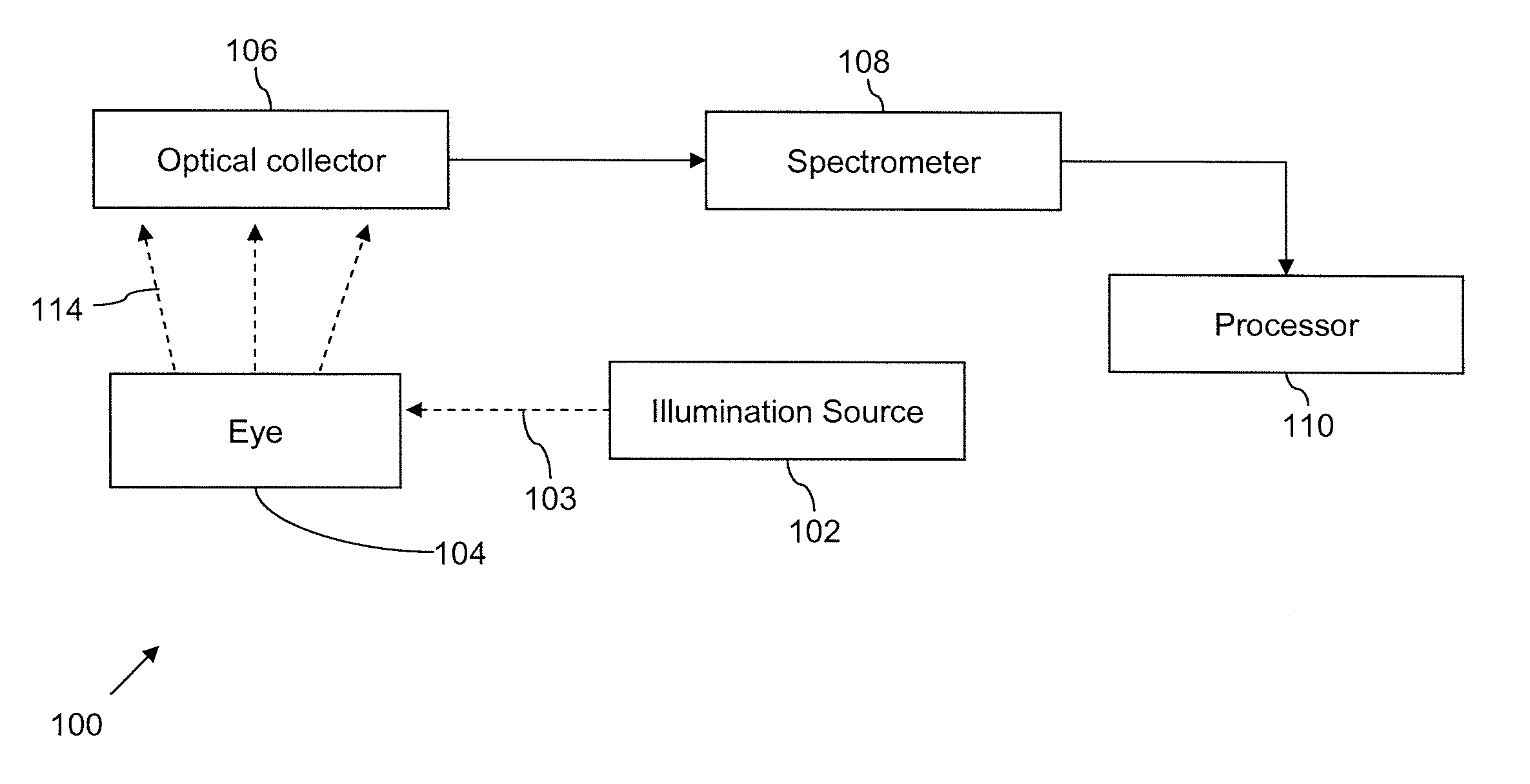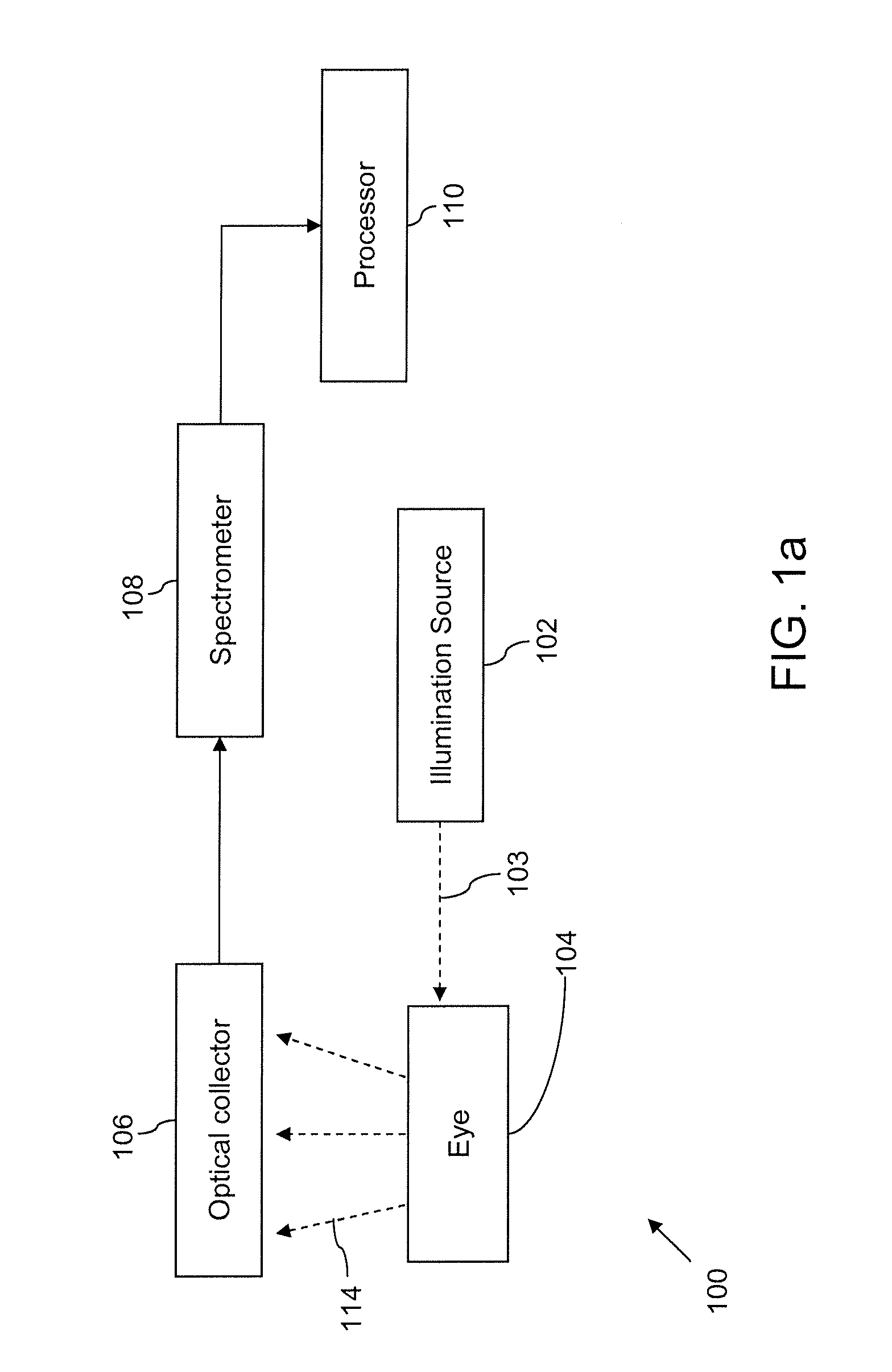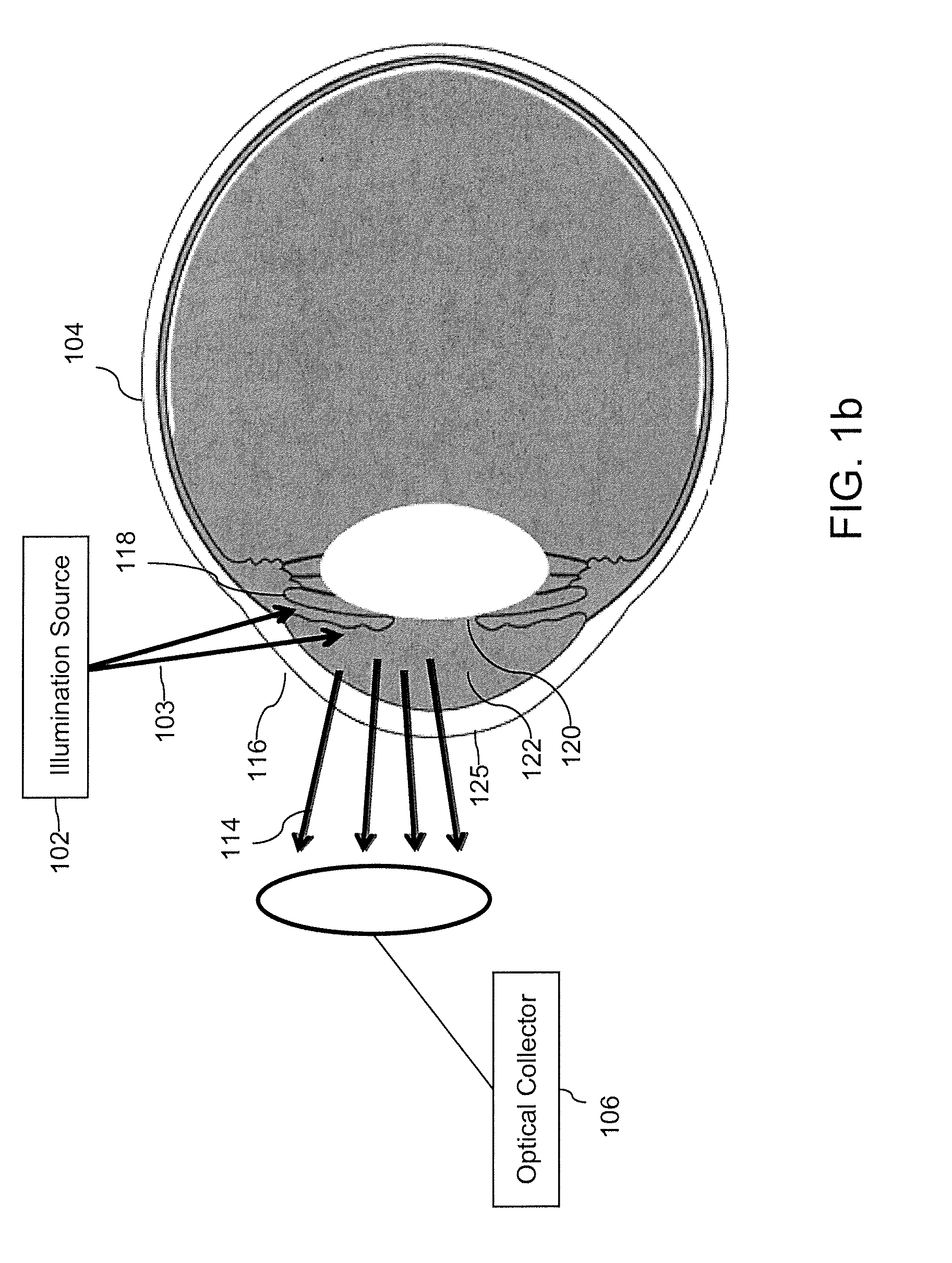Non-invasive ocular monitoring
a non-invasive, ocular monitoring technology, applied in the field of ocular diagnosis, can solve the problems of complex methods, requiring clinical setting, and affecting the normal function of the bab, and achieve the effect of accurately measuring the concentration level of analytes
- Summary
- Abstract
- Description
- Claims
- Application Information
AI Technical Summary
Benefits of technology
Problems solved by technology
Method used
Image
Examples
Embodiment Construction
The detailed description set forth below in connection with the drawings is intended as a description of embodiments of a non-invasive method and device for determining health condition of a subject through measurements of concentrations of analytes in the eye in accordance with the present invention and is not intended to represent the only forms in which the invention may be constructed, or utilized. It is to be understood that the same or equivalent functions and structures may be accomplished by different embodiments that are also intended to be encompassed within the spirit and scope of the invention. As denoted elsewhere herein, like element numbers indicate like elements or features.
An embodiment of the present invention provides a device and a method for non-invasively measuring concentration of an analyte in the human eye.
More specifically, an embodiment of the present invention provides a device for accurately measuring an analyte concentration level in the aqueous humor i...
PUM
 Login to View More
Login to View More Abstract
Description
Claims
Application Information
 Login to View More
Login to View More - R&D
- Intellectual Property
- Life Sciences
- Materials
- Tech Scout
- Unparalleled Data Quality
- Higher Quality Content
- 60% Fewer Hallucinations
Browse by: Latest US Patents, China's latest patents, Technical Efficacy Thesaurus, Application Domain, Technology Topic, Popular Technical Reports.
© 2025 PatSnap. All rights reserved.Legal|Privacy policy|Modern Slavery Act Transparency Statement|Sitemap|About US| Contact US: help@patsnap.com



